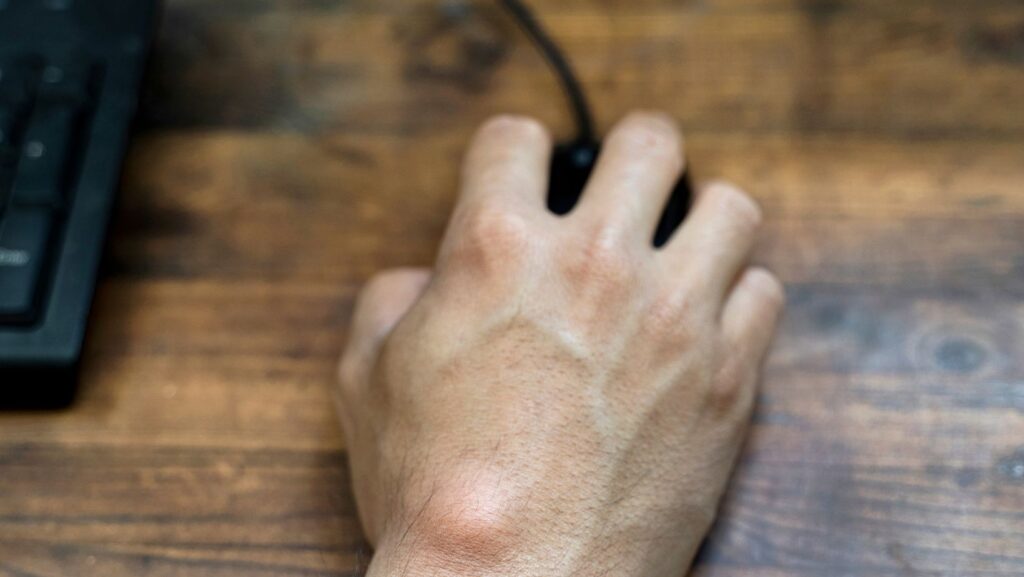
What is a ganglion cyst and how can you treat it?
Do you have fluid-filled swelling near a joint that you suspect might be a ganglion cyst but are wondering whether you need to see a doctor or not? Well, we’re here to help today by making sure you know everything about ganglion cysts so you’re aware of the best treatment plan. Let’s get right into it!
What is a Ganglion Cyst?
You can usually determine whether you have a ganglion cyst or not by looking and feeling the lump. These cysts feel like smooth balls underneath the skin. Within, they’re made of synovial fluid, which is a thick fluid that has a jelly-like consistency. This surrounds the joint or tendon to make sure it has enough lubrication to cushion the impact when you move.
You can get a ganglion cyst on any joint in the body, but they’re often most common on the wrists, hands, and fingers. They can also be found along the feet and toes.
The good news is that ganglion cysts are often harmless, but they might start to hurt enough that you seek treatment. Some doctors might ask you to wait a while to see if the cyst disappears on its own, although patients have reported that this can take years!
The reason why ganglion cysts form is still largely unknown, but we think they generally form when synovial fluid leaks out and collects in a sac next to the joint.
How Can You Treat Ganglion Cysts?
Once you decide you want to treat your cysts, either because they’re uncomfortable or unaesthetic, you will often be given two treatment options. We often only recommend treatment when it affects your range of movement or causes you pain, and here’s what you might be offered:
- Ganglion cyst removal by cutting the sac out
- Draining the fluid with a needle
Let’s take a look at these now:
Cyst Removal Surgery
There are two main ways to use surgery to cut out a ganglion cyst, including:
- Open surgery: Your surgeon will make a small 5 cm cut over the joint or tendon affected, where they can find the cyst to remove it
- Arthroscopy: A type of keyhole surgery that uses a camera inside the joint to help your surgeon look inside before using small instruments to remove the cyst through the same hole
You’ll most likely be put under local anesthesia for both of these surgery methods, so you’ll be awake but pain-free. Other surgeons might choose to put you under general anaesthesia if you’re worried or the cyst is particularly large or painful.
Aspiration with a Needle
Smaller cysts can often be aspirated with a needle and syringe during an outpatient appointment with your doctor. They’ll use a syringe to remove as much of the liquid from the cyst as possible, and you’ll often see an instant improvement. You might get a steroid injection where the cyst was to prevent it from returning, although research on whether this is effective is largely limited.
Most patients find that aspiration is painless, and you’ll have hardly any recovery time whatsoever. As this is the less invasive treatment option, it’ll often be offered first to avoid you having to go under anaesthetic.
Which Treatment Plan is More Effective?
Both surgery and aspiration come with the risk of the ganglion cyst growing back, but aspiration tends to be a little more likely for this to happen. Around half of ganglion cysts that are treated with aspiration return at some point, which might mean surgery is necessary instead. Surgery has a much lower chance of the cyst coming back, although it’s not impossible!
Research has also shown that ganglion cysts are more likely to come back if they’re on your wrists, although it’s unknown why this happens. So, don’t be surprised if your wrist cysts are repeat offenders.
Are there any Complications to Ganglion Cyst Removal?
We generally consider the removal of ganglion cysts to be a minor procedure with very few complications. However, a few patients might experience some stiffness and pain after the surgery, so you might want to take the rest of the day off to rest up and recover.
People who have the surgery under general anaesthetic might be at higher risk of complications in their heart and lungs, but your doctor will go through these before the surgery so you know exactly what to expect.
Final Thoughts
Ganglion cysts are fluid-filled sacs that grow near your joints or tendons. Most patients don’t find them to be too bothersome or painful, and some might even go away on their own! However, if you do choose to have them treated, you will often be offered either surgery to cut them out or aspiration with a needle. Your doctor will be able to walk you through each option and help you decide which is the best one for you.














